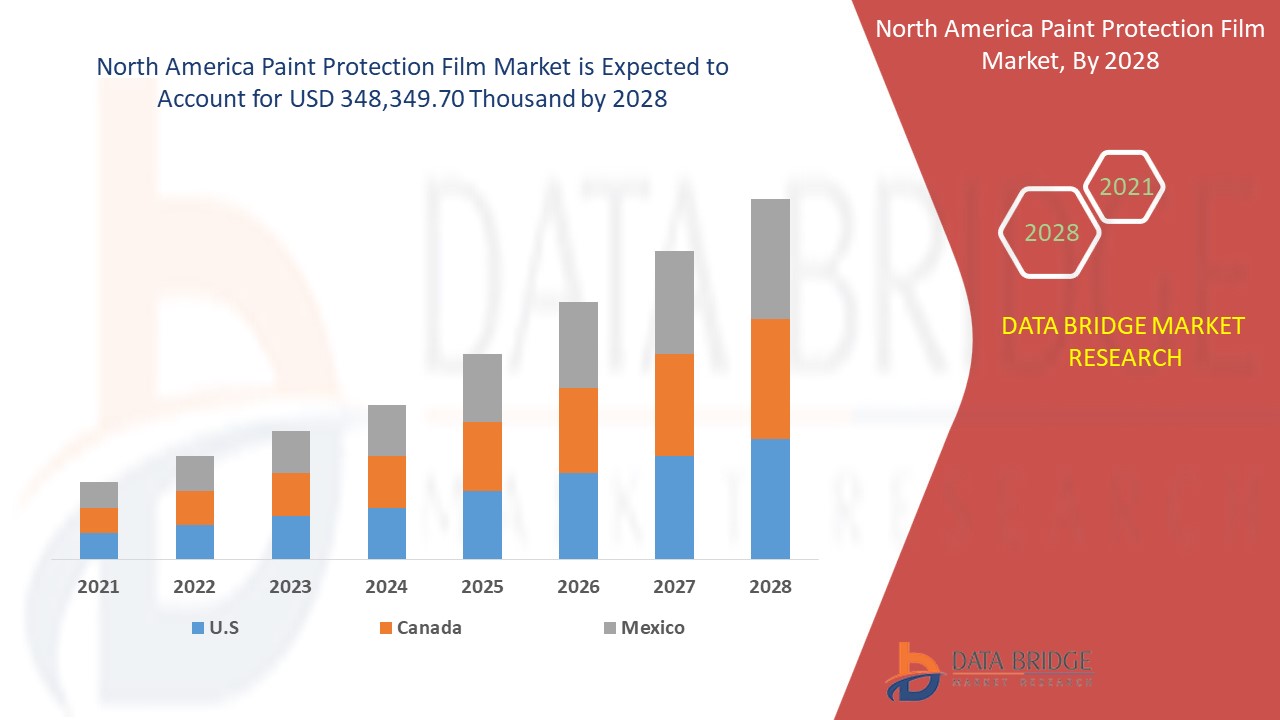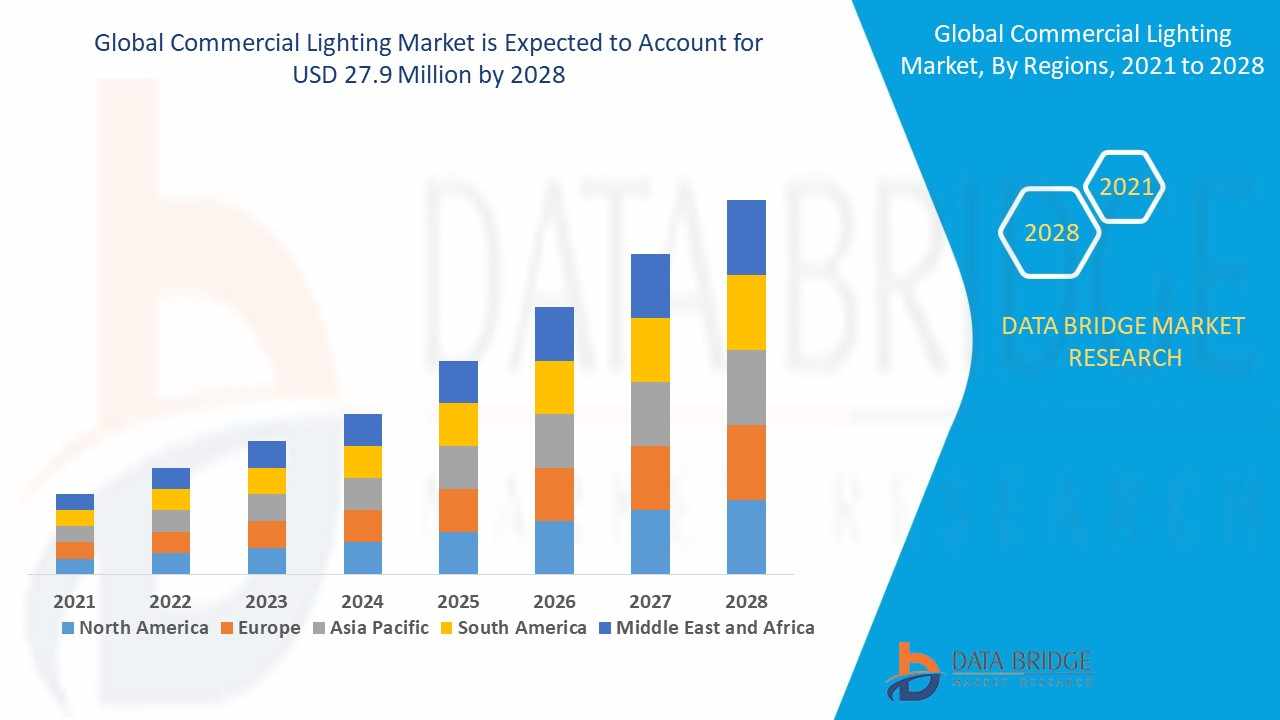North America's love affair with automobiles runs deep, from classic muscle cars to cutting-edge electric vehicles. With this passion comes a strong desire to preserve the aesthetic and value of these cherished possessions. Paint Protection Film (PPF) has emerged as an indispensable solution, providing a transparent, durable shield against the myriad threats of everyday driving and environmental exposure.
The paint protection film market is expected to gain market growth in the forecast period of 2021 to 2028. Data Bridge Market Research analyses that the market is growing at a CAGR of 6.6% in the forecast period of 2021 to 2028 and expected to reach USD 348,349.70 thousand by 2028.
Get the PDF Sample Copy (Including FULL TOC, Graphs and Tables) of this report @
Introduction to Paint Protection Film (PPF)
Paint Protection Film, often known as "clear bra" or "invisible shield," is a robust, self-healing thermoplastic urethane film meticulously applied to the painted surfaces of vehicles. Its primary purpose is to safeguard the original paint from scratches, stone chips, bug splatters, bird droppings, minor abrasions, and other environmental contaminants. Beyond its protective qualities, PPF helps maintain the vehicle's showroom finish, thereby preserving its resale value. While automotive applications are the most prominent, PPF is increasingly utilized in other sectors, including aerospace, electronics, and even for protecting surfaces on luxury goods and industrial equipment.
Market Size: A Strong Growth Trajectory
The North American Paint Protection Film market is a significant and rapidly expanding segment of the global PPF industry. In 2024, the global paint protection film market was valued at approximately USD 530.69 million, with North America holding a substantial share, estimated at around 24.56%. This regional market is projected for robust growth, with a Compound Annual Growth Rate (CAGR) of around 5.7% from 2023 to 2030, reaching an estimated USD 202.6 million by 2030. The United States, in particular, is a key driver, expected to reach USD 158.2 million by 2030 with a CAGR of 5.9% from 2023. Canada and Mexico are also contributing to this growth, driven by increasing automotive sales and a rising awareness among consumers about the benefits of vehicle protection.
Market Share: Automotive Dominance and TPU Supremacy
The automotive and transportation sector unequivocally holds the largest market share in North America. In 2024, this segment accounted for approximately 74.17% of the overall PPF market share globally. This dominance is due to the high volume of new and used vehicle sales, the significant aftermarket for car customization and detailing, and a growing consumer emphasis on maintaining vehicle appearance and resale value. Within the automotive sector, passenger vehicles represent the largest application.
From a material standpoint, Thermoplastic Polyurethane (TPU) is the overwhelming leader. In 2024, TPU-based films held an estimated 84.14% share of the global PPF market. This is attributed to TPU's superior characteristics, including exceptional clarity, durability, self-healing properties, flexibility, and resistance to yellowing and harsh environmental conditions. While Polyvinyl Chloride (PVC) films are also available, their market share is significantly smaller due to their comparative rigidity and lower performance. Gloss finish PPF currently dominates the market, preferred for its ability to enhance the paint's original luster.
Market Opportunities and Challenges
The North American PPF market, while dynamic, presents a unique blend of opportunities and challenges.
Opportunities:
Growing Automotive Industry: Despite fluctuations, the robust North American automotive market, fueled by strong new vehicle sales, a thriving used car market, and an increasing interest in electric vehicles (EVs), continues to drive PPF demand.
Increasing Consumer Awareness: Consumers are becoming increasingly educated about the long-term benefits of PPF, understanding it as an investment in vehicle preservation rather than a luxury accessory. This awareness is fostered by social media, online forums, and the growing professionalism of the detailing industry.
Luxury and High-End Vehicle Segment: North America has a significant concentration of luxury, sports, and classic car owners who are highly motivated to protect their valuable investments. PPF offers an unparalleled level of protection for these premium vehicles.
Technological Advancements: Continuous innovation in PPF technology, such as improved self-healing capabilities, enhanced stain resistance, anti-yellowing properties, and superior optical clarity, keeps the product appealing and effective. The development of eco-friendly and sustainable films also presents a growth opportunity.
Aftermarket Growth: The strong aftermarket for vehicle customization, detailing, and paint correction services provides a ready-made channel for PPF sales and installation. Many consumers opt for PPF post-purchase to protect their vehicles from immediate damage.
Expansion into Non-Automotive Sectors: While automotive dominates, there are growing opportunities in other industries like aerospace (for aircraft surfaces), electronics (for device screens and bodies), and even marine applications, where surface protection is crucial.
Challenges:
High Initial Cost: The cost of premium PPF materials and professional installation can be a significant barrier for some consumers, particularly those with mid-range or budget vehicles.
Installation Complexity: Proper PPF application requires highly skilled and experienced technicians. Poor installation can result in air bubbles, wrinkles, misalignment, or peeling, undermining the film's effectiveness and aesthetic appeal. This necessitates rigorous training and certification for installers.
Perceived Durability and Lifespan: While modern PPF is designed for longevity, some consumers may have misconceptions about its lifespan or be concerned about potential yellowing or degradation over time, particularly with lower-quality films.
Competition from Alternative Products: Ceramic coatings, waxes, and sealants offer alternative paint protection solutions, some of which are more affordable or easier for DIY application, posing a competitive challenge to PPF.
Market Fragmentation: The presence of numerous PPF brands and installers, with varying levels of quality and expertise, can make it challenging for consumers to choose reliable products and services.
Market Demand
The demand for Paint Protection Film in North America is driven by a combination of factors. The vast and active automotive market, coupled with increasing consumer awareness of vehicle longevity and resale value, is a primary catalyst. Owners of new vehicles, especially luxury cars, often seek immediate protection to maintain the pristine factory finish. Similarly, those with pre-owned vehicles invest in PPF to restore and preserve the paintwork. The region's diverse climate, from harsh winters with road salt to hot, sunny summers with intense UV radiation, also necessitates robust exterior protection. Furthermore, the growing trend of vehicle customization and personalization contributes to demand, as PPF offers a protective layer without altering the original paint color, while matte and satin finishes provide unique aesthetic options.
Market Trends
Several key trends are shaping the North American Paint Protection Film market:
Advanced Self-Healing Properties: The continued development of PPF with enhanced self-healing capabilities is a major trend. These films can effectively recover from minor scratches and swirl marks when exposed to heat, maintaining their pristine appearance for longer periods.
Improved Clarity and Anti-Yellowing Formulations: Manufacturers are consistently refining PPF formulations to ensure superior optical clarity and long-term resistance to yellowing, even under prolonged UV exposure, which is crucial for maintaining the vehicle's original look.
Specialty Finishes: While gloss remains popular, there's a growing demand for matte and satin finish PPF, allowing vehicle owners to achieve a unique, customized aesthetic while still benefiting from comprehensive paint protection.
Increased Integration of Ceramic and Graphene Technology: Some manufacturers are integrating ceramic or graphene-infused top coats into their PPF products, offering enhanced hydrophobic properties, increased scratch resistance, and an even deeper gloss.
DIY Kits and Accessibility: While professional installation remains dominant for premium PPF, the emergence of more user-friendly DIY PPF kits for smaller applications is observed, catering to a segment of the market seeking more affordable or hands-on solutions.
Sustainability Focus: A growing emphasis on environmentally friendly practices is prompting manufacturers to develop more sustainable PPF solutions, including PVC-free films and those with lower volatile organic compound (VOC) emissions during manufacturing and application.
Expansion of Training and Certification Programs: To address the need for skilled installers and ensure high-quality applications, there is an increasing number of specialized training and certification programs for PPF technicians. This trend helps maintain industry standards and builds consumer confidence.
The North American Paint Protection Film market is evolving rapidly, driven by innovation, consumer demand for aesthetic preservation, and the region's strong automotive culture. As technology continues to advance and awareness grows, PPF is set to become an even more integral part of vehicle care and protection across the continent.
Contact Us:
Data Bridge Market Research
US: +1 614 591 3140
UK: +44 845 154 9652
APAC : +653 1251 975









Write a comment ...